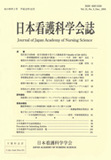Japanese
English
- 販売していません
- Abstract 文献概要
- 参考文献 Reference
要旨
本研究は,家庭環境における生後1か月児を対象として,夜間の睡眠・覚醒の行動観察を行い,睡眠状態の特徴を明らかにすることを目的とした.対象は36人の第一子,正常児(生後30.8日)で,自宅における夜間の睡眠・覚醒状態の録画をビデオ録画法によって2夜連続行い,第2夜のデータをプロトコールに従ってコード化し,分析した.
その結果,1か月児の当該夜における睡眠の全体像は,総録画時間のうち総睡眠時間はその約7割を占める7.4時間であった.睡眠時間のうち浅い眠り(Active Sleep)と深い眠り(Quiet Sleep)のバランスは7:3で,浅い眠りの割合が多かった.夜間の中途覚醒により分断される周期毎の睡眠期は,平均124分であった.睡眠変数の主成分分析により,「眠りの安定性」「眠りの深さ」の2成分が抽出された.「眠りの安定性」は[平均睡眠期],[睡眠率],[覚醒回数],[覚醒期のばらつき]の4変数から,「眠りの深さ」は[%QS],[%AS]の2変数からなっていた.今回,睡眠の必然的分断によっておこる,1か月児の実際的な睡眠の特性を反映した新しい睡眠変数[平均睡眠期][覚醒期のばらつき]が採択された.
今後は,これらの変数をさらに検討するとともに,継続的な観察を通して,乳児の睡眠・覚醒パターンを明らかにしていくことが重要であると考える.また,今後の方向性として,この研究法をさらに進め,夜間の睡眠や授乳に関わる母子の相互作用を明らかにする必要性が示唆された.
Abstract
This study set out to clarify the characteristics of infant sleep-wake states by behavioral observation at night at the first month after birth. A total of 36 healthy first-born infants (average age 30.8 days) participated in this study. Infant sleep-wake states in the night were recorded using video-somnography for two consecutive nights, and data of the second night coded and analyzed using an established protocol.
Mean total sleep time was 7.4 hours, 70% of the mean total recording period. The ratio of the percent of total sleep time in active sleep (AS) to the percent of total sleep time in quiet sleep (QS) was 7: 3. The mean length of all sleep periods was 124 minutes. Principal component analysis of night sleep yielded two components:“sleep stability”and“sleep depth”. The component of“sleep stability”consisted four variables: mean sleep period; percentage of sleep time; number of waking; and standard deviation of awake period. The component of“sleep depth”consisted two variables: % AS and % QS. Two variables from this analysis, mean sleep period and standard deviation of awake period are newly defined sleep parameters, and should be considered actual sleep features of one month-old infants.
It is necessary to examine these newly identified sleep parameters in more depth. Moreover, it is important to discover whether and how patterns at one month persist in later months. Further studies using the methods of this study and also methods to document mother-infant interactions during nighttime sleep and feeding are indicated.
Copyright © 2001, Japan Academy of Nursing Science. All rights reserved.


